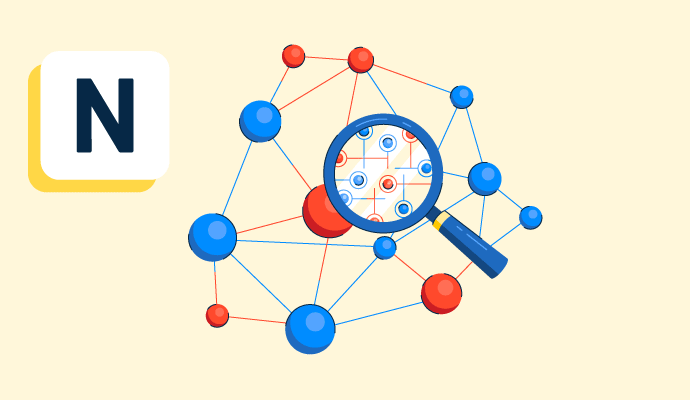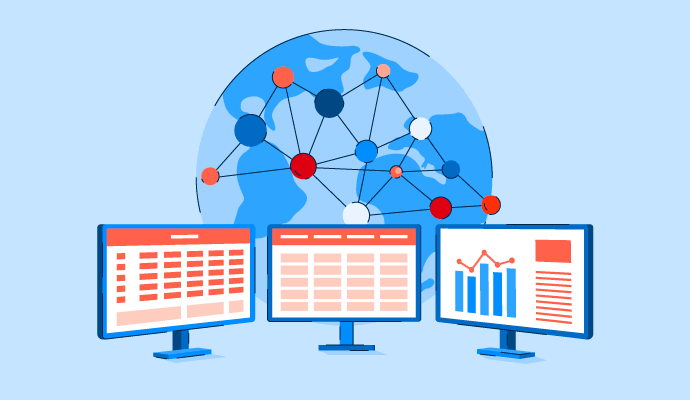What is network discovery?
Network discovery refers to how electronic devices, such as computers or tablets, are able to find each other if they’re connected to the same network.
Also known as topology discovery, network discovery means that any devices on the same network can communicate with others and give administrators easier access to adding more devices.
Network management tools are the best way to control a whole system from a centralized platform within large IT infrastructures. They typically offer options for creating device inventories and network maps that reveal potential points of failure before problems arise.
Types of network discovery
Developers must design protocols so users can discover devices on their local network. The most common procedures for network discovery are:
- Simple network management protocol (SNMP). Also known as internet standard protocol, SNMP is one of the simplest ways for networks to discover new devices. Information within can pass via both local area networks (LAN) and wide area networks (WAN) using SNMP.
- Link layer discovery protocol (LLDP). This type of protocol is used to define encapsulated messages within a one-way system. Data transmitted from enabled devices connects to a neighboring device to send data, which is then stored in a management information database (MIB) for quicker connections in the future.
- Ping. As a software utility and system management tool, pings test whether a device is reachable on the network. Pings measure the time the ping packet data takes to reach the destination device on the network and back again. This helps administrators identify problems with network connectivity or individual devices in the system.
Basic elements of network discovery
Any devices that have network connectivity capabilities can be part of the network discovery process. These often include:
- Hardware: any physical device that needs to connect to the network, such as computers, routers, printers, switches, servers, or firewalls.
- Software: any software within a necessary device must also be accounted for. This could be an application, the whole operating system, or any patches and updates.
- Virtual networks: the network itself is a critical part of discovery. Some organizations may run multiple virtual networks at one time, while others operate on a single network with every device connected.
Benefits of network discovery
No matter the size of the team or business, every company needs to have some level of network discovery. There are several important benefits to this process.
- Understanding the relationship of devices. IT teams will never get a full picture of the network’s workings without a clear picture of how devices are connected. Network discovery is the first step in the longer journey of mapping the entire network infrastructure.
- Preparing for possible downtime. While it’s always the goal to minimize network outages and downtime, they still happen even to the most well-mapped networks. A network discovery process quickly identifies areas of the network that may be at risk for downtime so teams can take proactive measures to minimize this.
- Finding potential cybersecurity issues. Cybercriminals may attempt to connect their devices to a network for malicious reasons. A strong network discovery process flags these unauthorized devices and prevents them from accessing the network. At the same time, it blocks those IP addresses from future connectivity attempts.
Best practices for network discovery
When working on a new network discovery plan, teams have several best practices to consider.
- Using all three types of discovery protocol. While SNMP may be the most common protocol used for network discovery, both LLDP and pings support the process. Teams should aim to use all three protocols throughout the network discovery process to ensure they don’t miss any hardware or software from the network.
- Creating an inventory of IT assets. Knowing exactly what the business owns or uses before embarking on network discovery is essential, especially from a security perspective. To prevent unauthorized devices from connecting to the network, IT staff should be able to account for all devices and software.
- Building a network topology map. Creating a network map is one of the next steps after discovery. Having a visual representation of everything connected to the network helps identify issues quickly and provides stakeholders with a top-level view of every device connected. This can be particularly useful when companies begin to scale their digital assets or add more devices to the network.
Monitor the ongoing performance of your network-connected devices with specialist network monitoring software.

Holly Landis
Holly Landis is a freelance writer for G2. She also specializes in being a digital marketing consultant, focusing in on-page SEO, copy, and content writing. She works with SMEs and creative businesses that want to be more intentional with their digital strategies and grow organically on channels they own. As a Brit now living in the USA, you'll usually find her drinking copious amounts of tea in her cherished Anne Boleyn mug while watching endless reruns of Parks and Rec.

